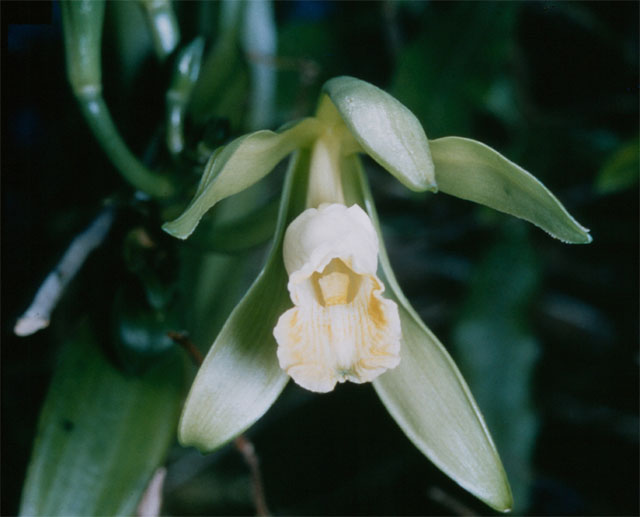
Planifolia / Everglades National Park
1. It's the second most expensive spice in the world, hitting a high of $600 per kilogram in 2018 and currently trading at around $567/kg.
2. The Totonac people native to the east coast of Mexico cultivated the pods from which the spice is derived around the 15th century. Aztecs invaded from the central highlands of Mexico, and conquered the Totonacs. The Aztecs developed a taste for the pods and named the fruit tlilxochitl, or "black flower" (because the matured fruit shrivels and turns black after being picked. Spanish conquistador Hernán Cortés is believed to have introduced it to Europe around 100 years later.
3. The plant from which the spice is derived is an epiphyte — a plant that grows anchored to trees or shrubs which it depends upon for mechanical support but not for nutrients.
4. Attempts were made to grow the plant in other parts of the world with partial success; the vines would grow from clippings but would hardly ever produce fruit. Then in 1841, on the French-held island of Réunion (close to Mauritius), a 12 year old slave boy, Edmond Albius, discovered that because the plant was a hermaphrodite with both male and female sex organs, he could make the plant self-pollinate by pushing those organs together, causing it to bear fruit. This made cultivated production of the spice a reality for the first time.
5. The French now knew what they needed to grow the spice on a large scale: tropical weather conditions, and a large labour force to hand pollinate the plants. Madagascar, west of Réunion, and the weather conditions and a population of around 2 million. So, in 1895, the French invaded the island, overthrew the government, introduced the spice crop, and put the newly conquered populace to work.
6. The Mexicans continued world leaders in production of the spice, the area around the Totonac city of Papantla was the global hub of spice production. This changed in 1932 when crude oil reserves were discovered in the nearby city of Poza Rica de Hidalgo. Deforestation of the area to exploit the oil reserves meant that the trees which the spice plants depended upon were wiped out.
7. With Mexico out of the way, Madagascar became the world leader in spice production where it remains today; producing 41% of the world's supply. But it comes at a terrible cost; every flower has to be individually hand-pollinated; the sap of most species of the plant causes moderate to severe dermatitis if it comes in contact with bare skin; the workers who grow the crop earn the equivalent of around R20 per day.
8. Harvesting the fruit is equally labour intensive: each pod ripens at its own pace, and so every plant has to be examined every day, and a fruit picked a day early or a day late loses most of its value.
9. Before the beans are usable, they need to cured. This means killing them in hot water to stop growth, sweating them in high humidity for a week or more, drying them for 3-4 weeks, and then conditioning them for 5-6 months in closed boxes. Only then does it get taken to market where it eventually ends up in your ice-cream.
10. The modern name of the spice, Vanilla, dates to mid 17th century: from Spanish vainilla ‘pod’, diminutive ofvaina ‘sheath, pod’, from Latin vagina ‘sheath’.
